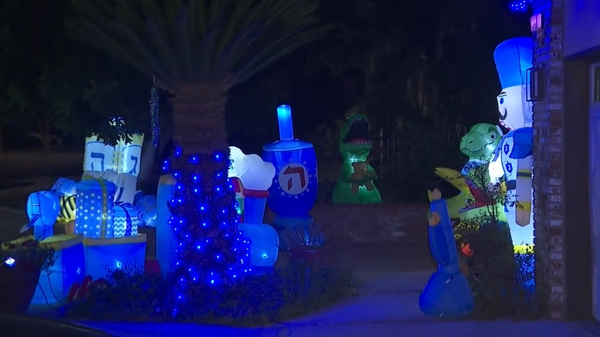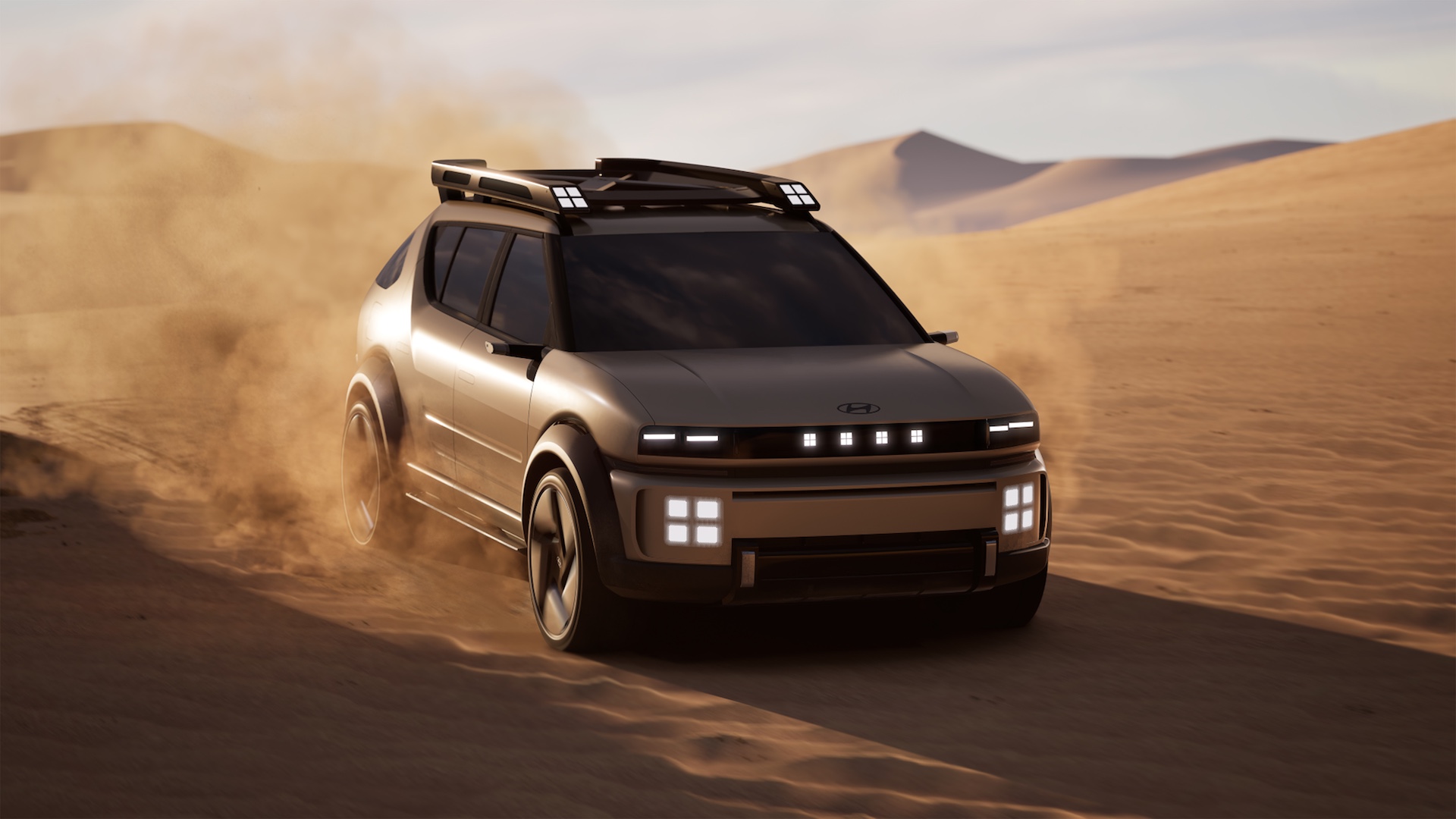
- Initium concept showcases new design direction for fuel cell vehicles
- Production is scheduled to begin next year
- SUV shape is a ploy to prove hydrogen is robust and safe for everyday use
Hyundai has lifted the lid on its latest hydrogen fuel cell concept, which features all-new fuel cell electric vehicle technology (FCEV) for improved range, performance and durability.
Destined to replace the Nexo, Hyundai’s long-serving but relatively slow-selling FCEV, the Initial concept showcases a bold new design direction that will house the latest technology.
Despite a global push for pure electric vehicles, Hyundai is one of the few automakers that is fully committed to hydrogen as a source of fuel for both future passenger cars, as well as an array of commercial vehicles, including buses, trucks and even construction equipment.
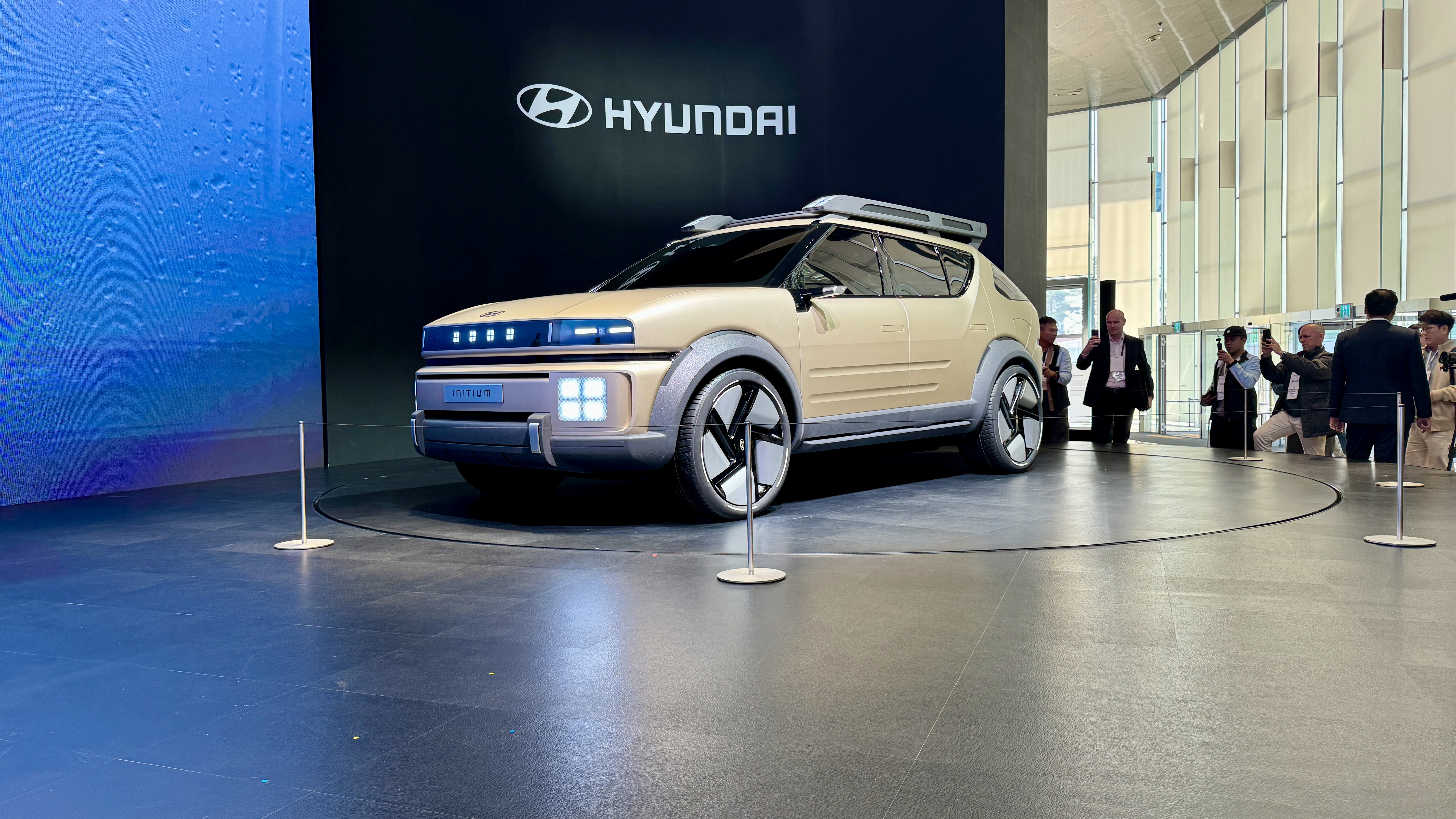
The Initium concept takes the form of a rugged SUV, complete with a new ‘Art of Steel’ design language that chief designer SangYup Lee says is both “solid and safe”. Apparently, the ‘+’ inspired graphic that you see in the light signature and the bumper will become a stable part of the company’s FCEV passenger cars of the future.
It borrows much off its face from the retro-futuristic N Vision 74 concept, a car that showcased hydrogen’s role in high-performance EVs. Initium is a continuation of this but wrapped up in a more consumer-friendly, SUV package.
Massive 21-inch wheels are covered in bespoke aerodynamic covers and wrapped in low rolling resistance tires, while a rugged roof rack houses integrated front lamps and taillights.
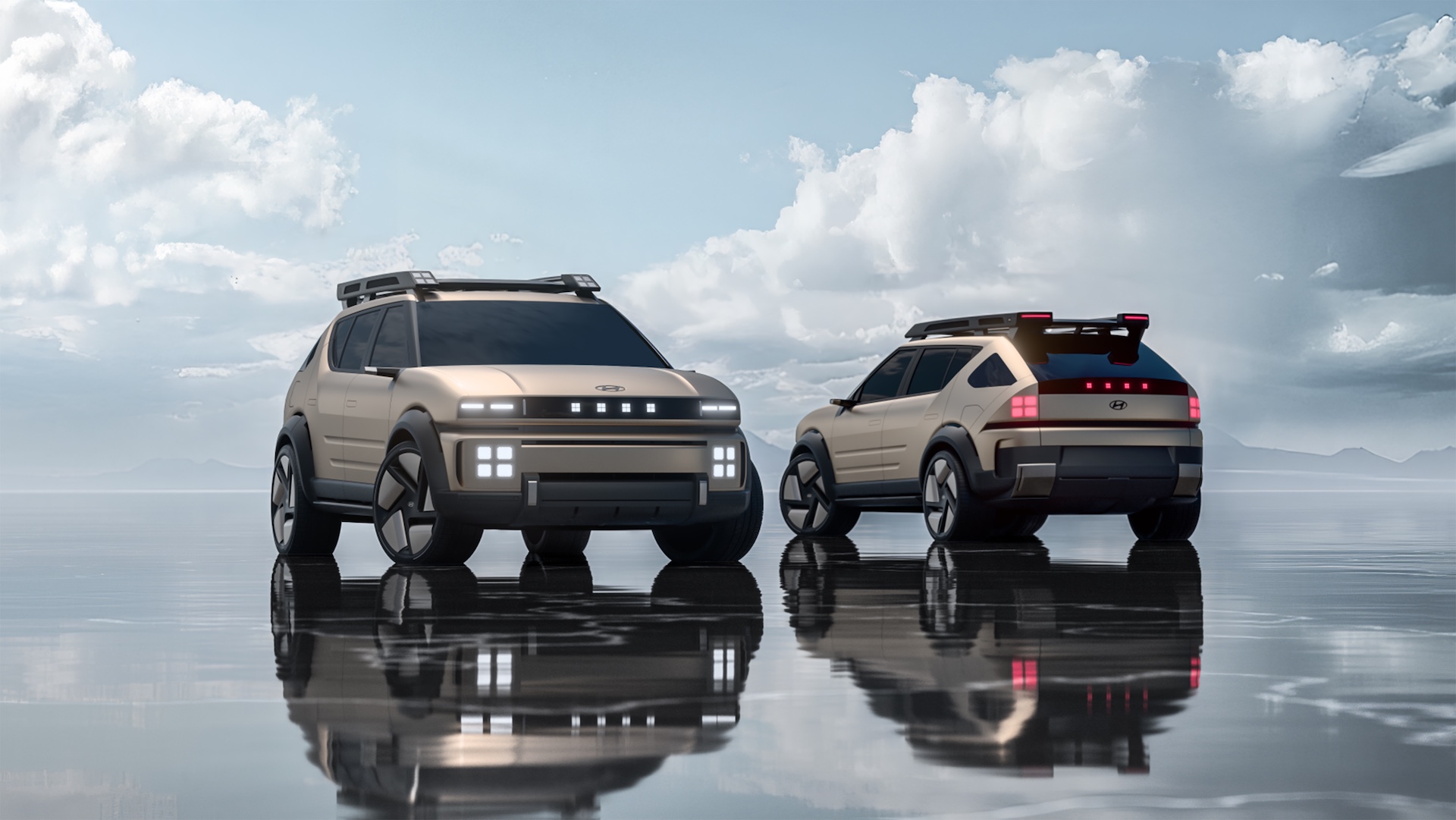
The rear section has a feint whiff of Pontiac Aztek about it, although the LED lighting signature moves things on from Walter White chic. The four cubes at the front and rear apparently morse code for the letter ‘H’, signifying both Hyundai and hydrogen.
According to Jin Huang Jung, head of vehicle development at Hyundai, 220V Vehicle-to-Load technology allows the fuel cell stack, dubbed a portable green energy source, to power everything from outdoor cookers to appliances in the home. There’s no need for an adaptor either, as the external socket is designed to take Korean plugs.
Hyundai’s 27 years in hydrogen fuel cell research has resulted in the next generation of fuel cell stacks that it believes moves the game on from the early units found in the marque’s ground-breaking Tucson IX35, which offered a range of around 258-miles, and the Nexo of 2018, which increased that range to 414 miles in later iterations.
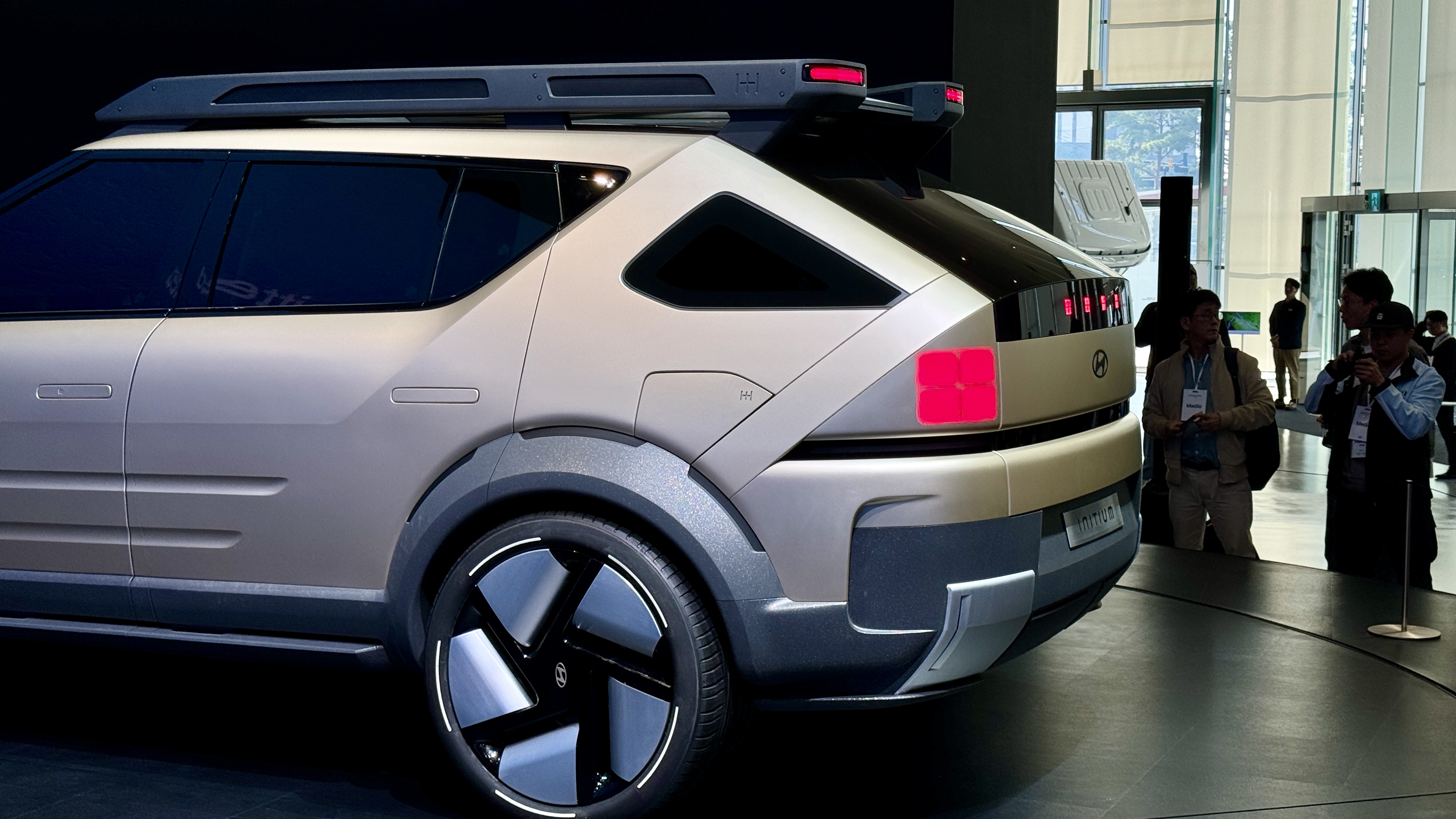
The next generation fuel cell vehicle, which will go into production next year, is aiming for a range in excess of 400 miles, which is not exactly the huge increase many expected. But with increased hydrogen density aboard its tanks and an electric motor that is now capable of developing 150kW – or around 200bhp – as opposed to 120kW.
The 0-62mph is now pegged at eight seconds, over a second faster than Nexo.
More importantly, Hyundai says the system’s durability has been drastically improved, reducing the overall degradation of the fuel cell stack to ensure it delivers the claimed range and performance for the vehicle’s lifespan.
Hyundai says it has also developed an FCEV-specific route planner that, much like those systems that hunt down an electric vehicle charging station, can plot an optimal route from within the infotainment system, finding hydrogen charging stations along the way without having to access a separate app.
Analysis: Hydrogen still has a long way to go
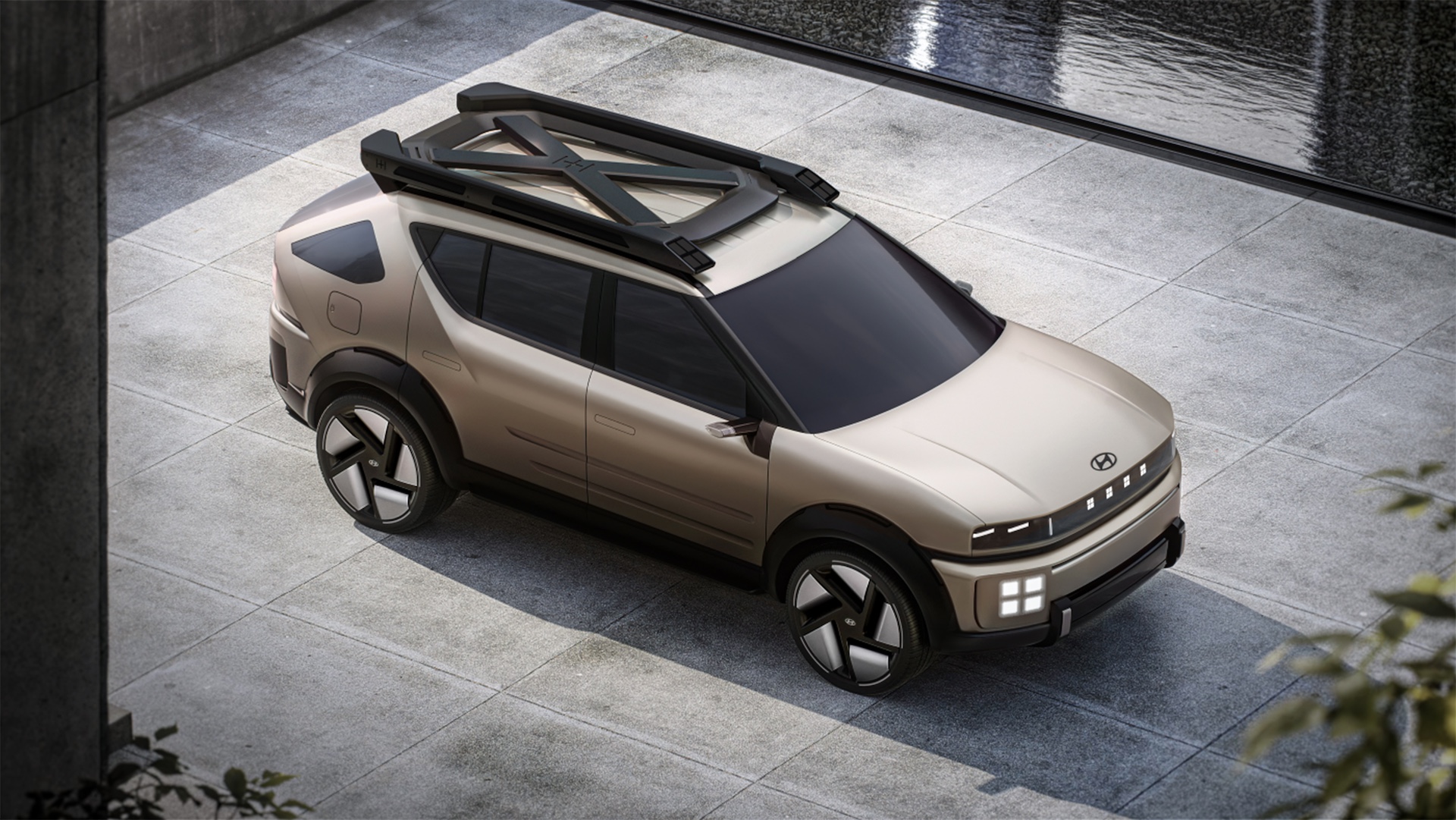
According to Hyundai engineers, it costs around $23million to set-up a public hydrogen refueling station.
Despite this, South Korea hopes to grow its public charging stations from the 192 available today, to well over 600 by 2030. This will help it service the 40,000 hydrogen-powered vehicles it currently has on the roads.
However, the number of fueling stations in other key markets makes for depressing reading. There are just 100 in North America and 265 in Europe. In the UK, the number of hydrogen fueling stations is actually dwindling, not growing.
Producing and transporting hydrogen is also an expensive business, making the whole process costly and more complex than simply recharging batteries. Even handling a hydrogen fueling nozzle, which delivers the gas at a massive 350bar pressure, requires heavy lifting and a knowledge of the process.
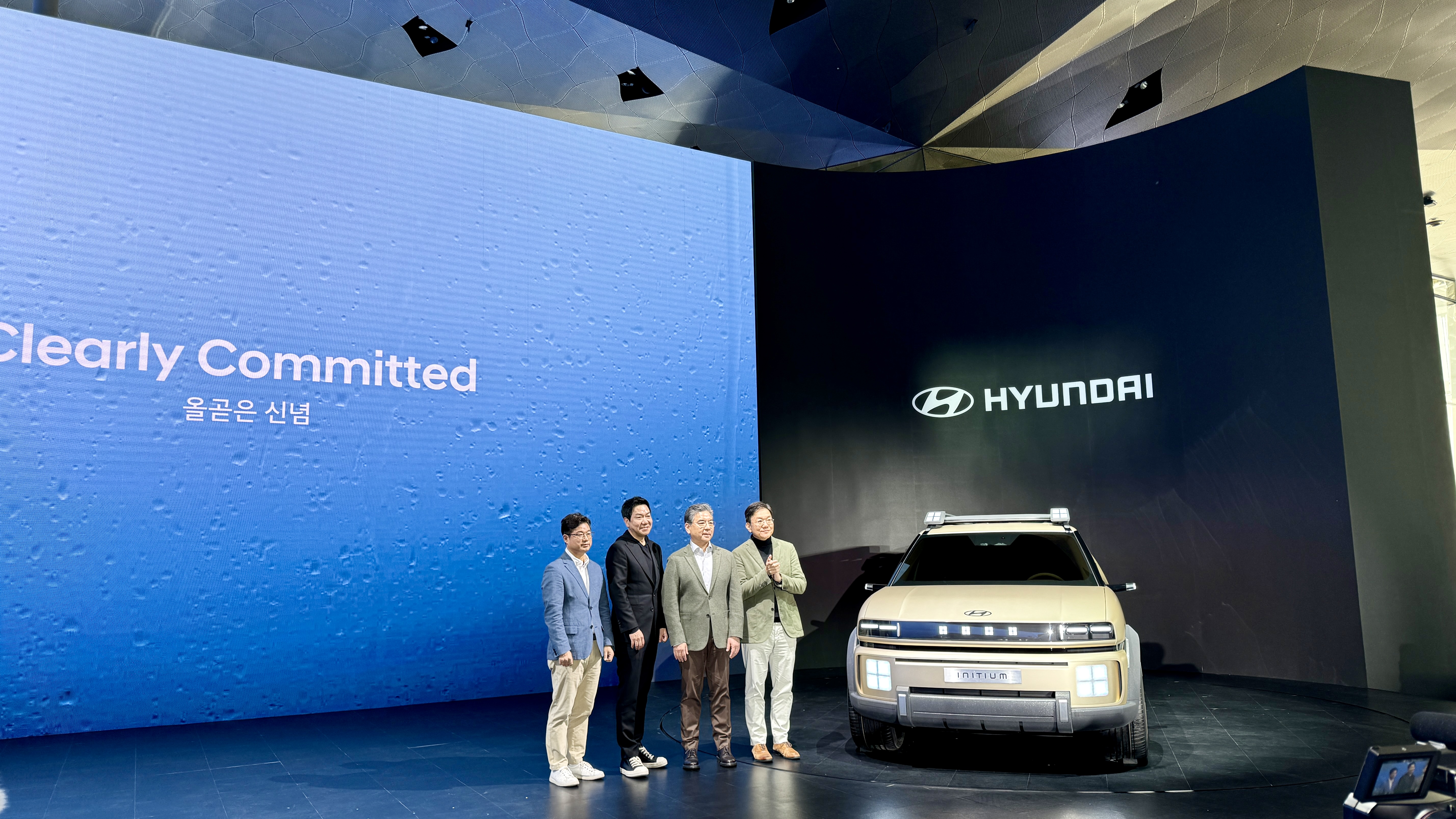
There are also big questions over sustainability, as a hydrogen fuel cell stack is also complex and requires the use of raw earth materials. Couple this with the fact they also require a standard automotive battery pack to function, albeit a much smaller one than a typical EV, and it presents a major problem when it comes to recycling and the end-of-life process.
Jin Huang Jung, Hyundai's head of vehicle development, states that the company was “developing strategies” to recycle elements of the fuel cell stack at the end of its life, but recognized that there were no programs to reuse them like there are with typically EV battery packs.
There are also many issues surrounding the business of producing hydrogen that, if not done using clean energy sources like wind or solar, requires a huge amount of CO2-producing energy.
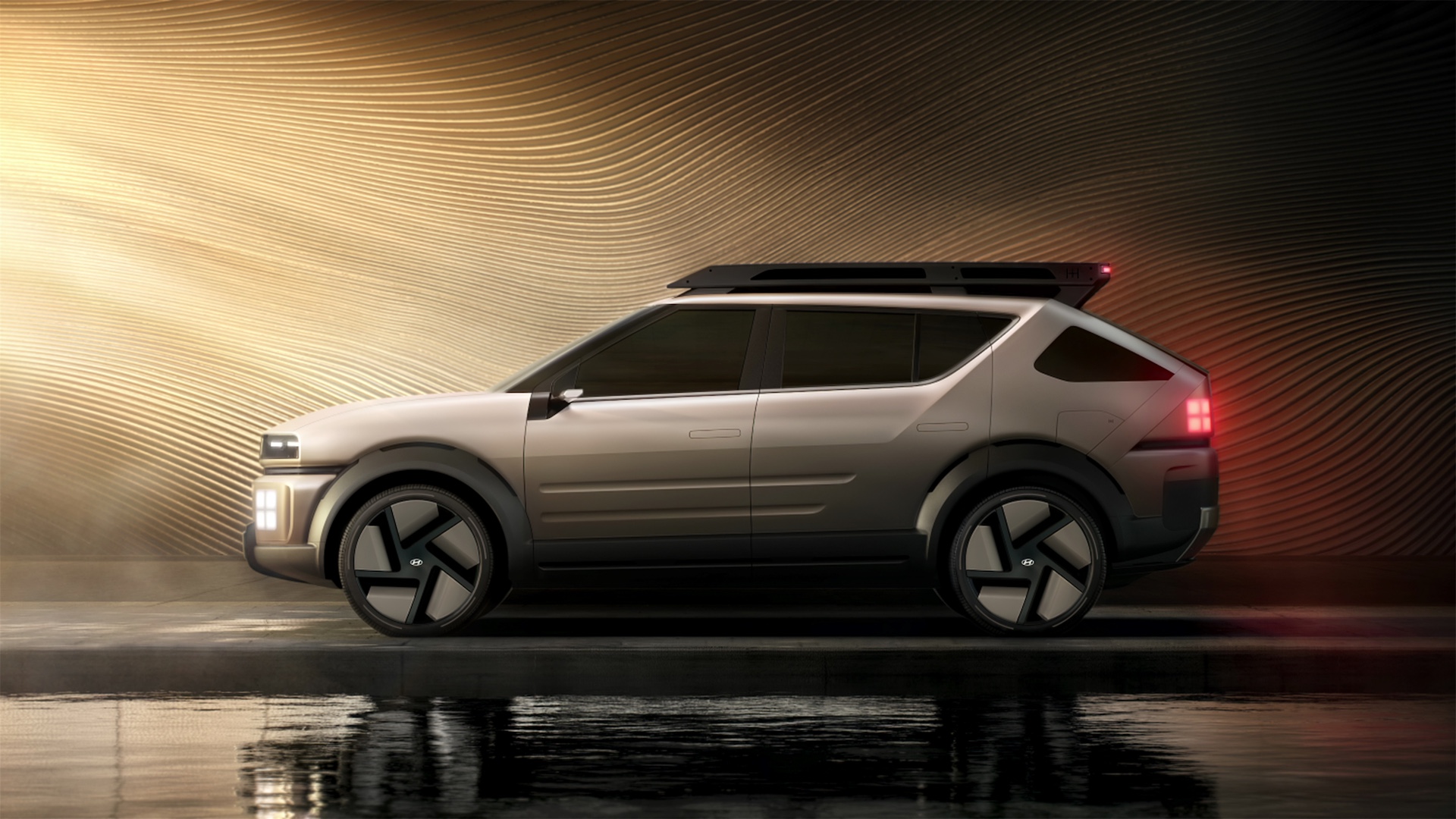
But Hyundai’s HTWO vision goes beyond merely developing hydrogen-powered vehicles, as its plan is to create a circular economy where hydrogen is produced from biomass and plastic waste, distributed via its fleet of hydrogen-powered trucks and then used by everything from trams to even eVTOL craft.
The company already has a successful program running in the port of Oakland, California, where some 30 Class 8 Xcient fuel cell hydrogen-powered trucks are helping it reduce its carbon output without impacting payload abilities or halting operations with lengthy charging stops.
Hyundai sees hydrogen as an important part of the future’s energy mix, but the technology, despite being some 27 years old, still feels very much in its infancy where passenger cars are concerned.

